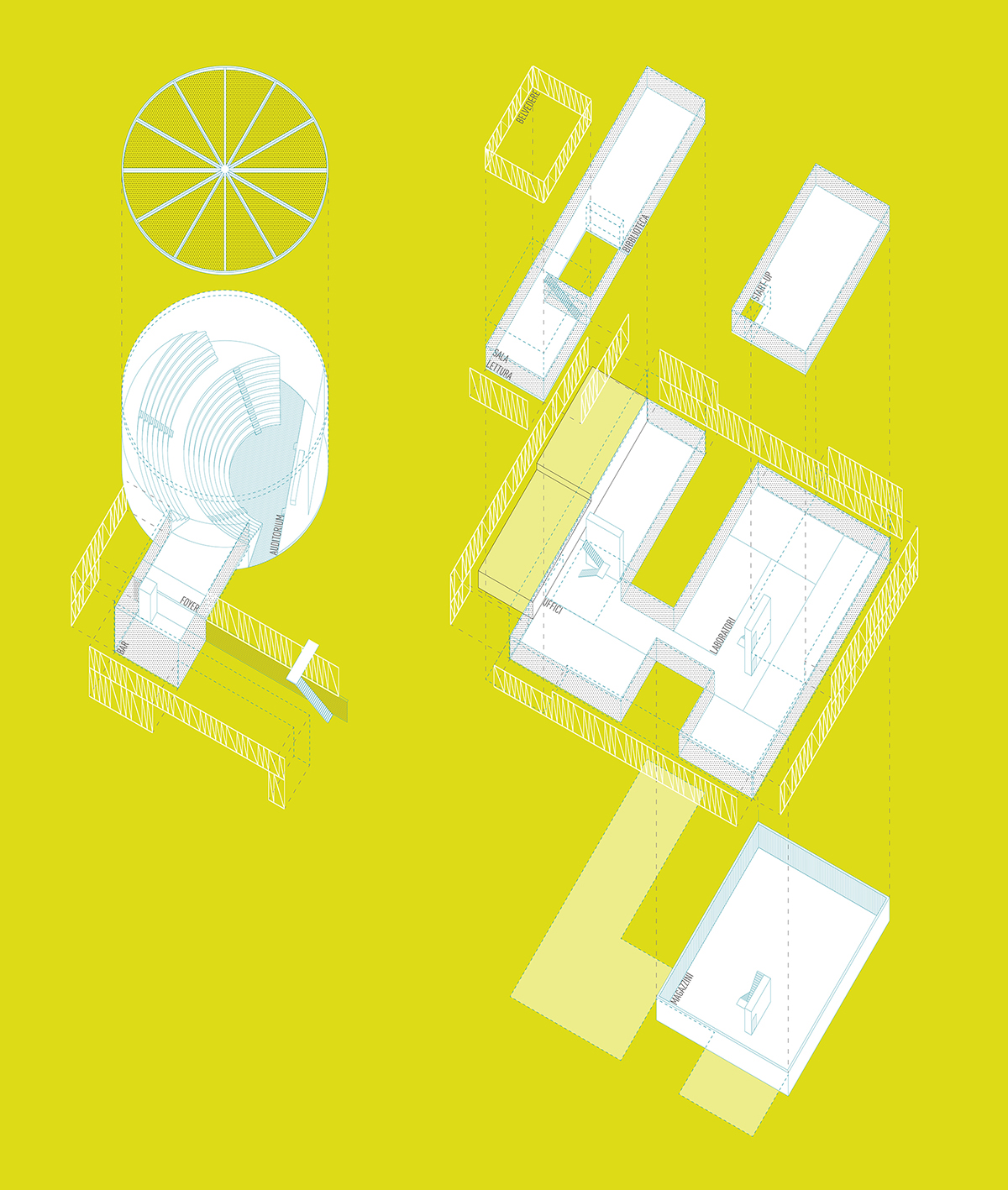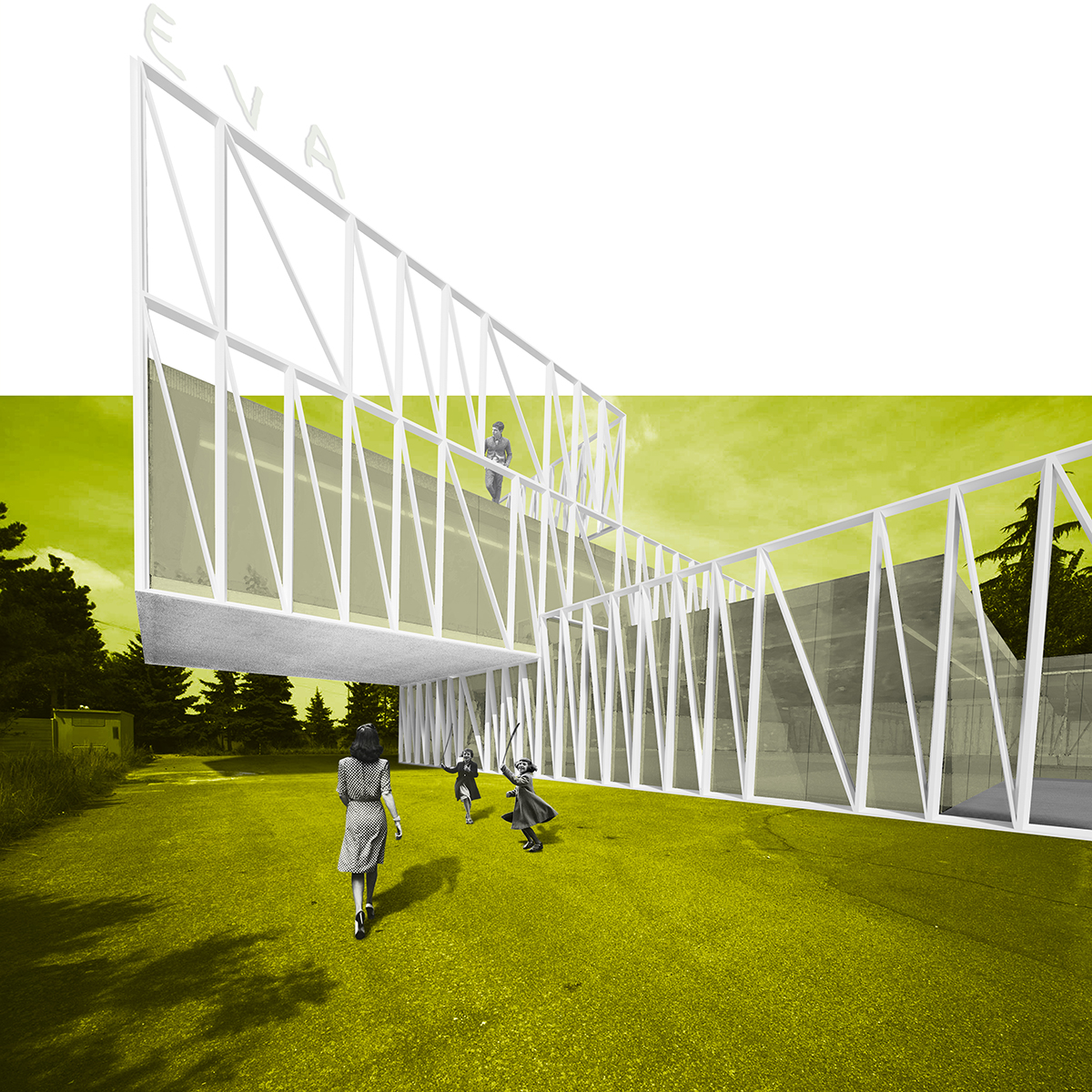
E.V.A. - Energy Village Alessandria - is a project to transform a former power plant built by ENEL (Italy’s main energy producer) into a 'scientific-cultural park', a hub for technological and environmental research, with a mix of different functions that could attract different kinds of users and potential investors.
EVA is a specific solution, but it's also conceived as a model that could be repeated for similar areas in disuse. It's a system that reflects the space's original vocation of energy production. It's the reutilization of old productive structures for new purposes, a space where humanistic studies and technical research can develop together. The project identifies a wooden basic constructive module, and its repetition generates all the new architectures: a landmark building on the access to the area hosting the research center, and smaller artifacts that, with parasite-like approach, regenerate the old structures by installing cultural, educational, recreational functions.
Some of the most iconic structures are treated as pieces of land art, with the contribution of Italian renowned artist Valerio Berruti, who also designed the logo for the project.
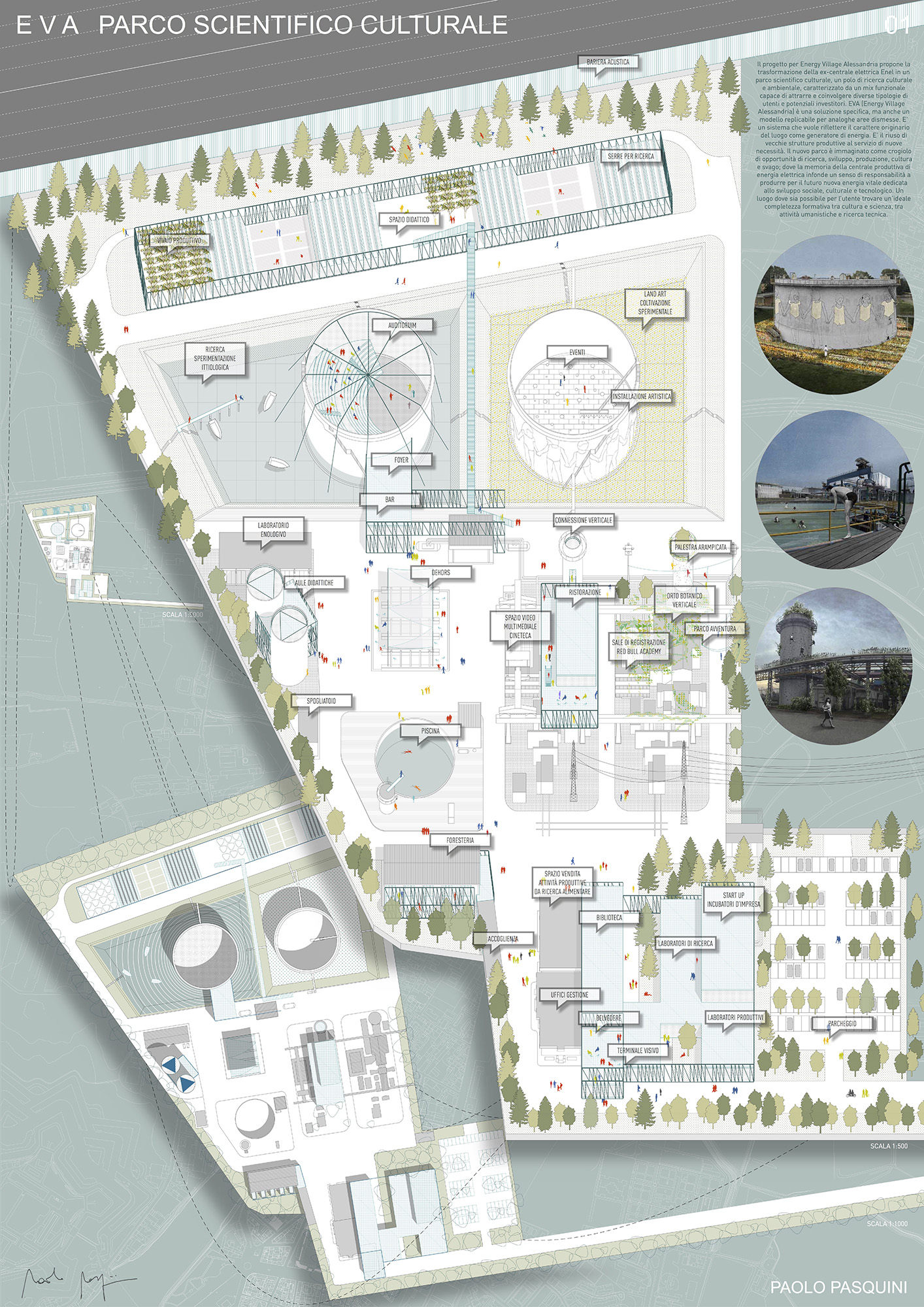
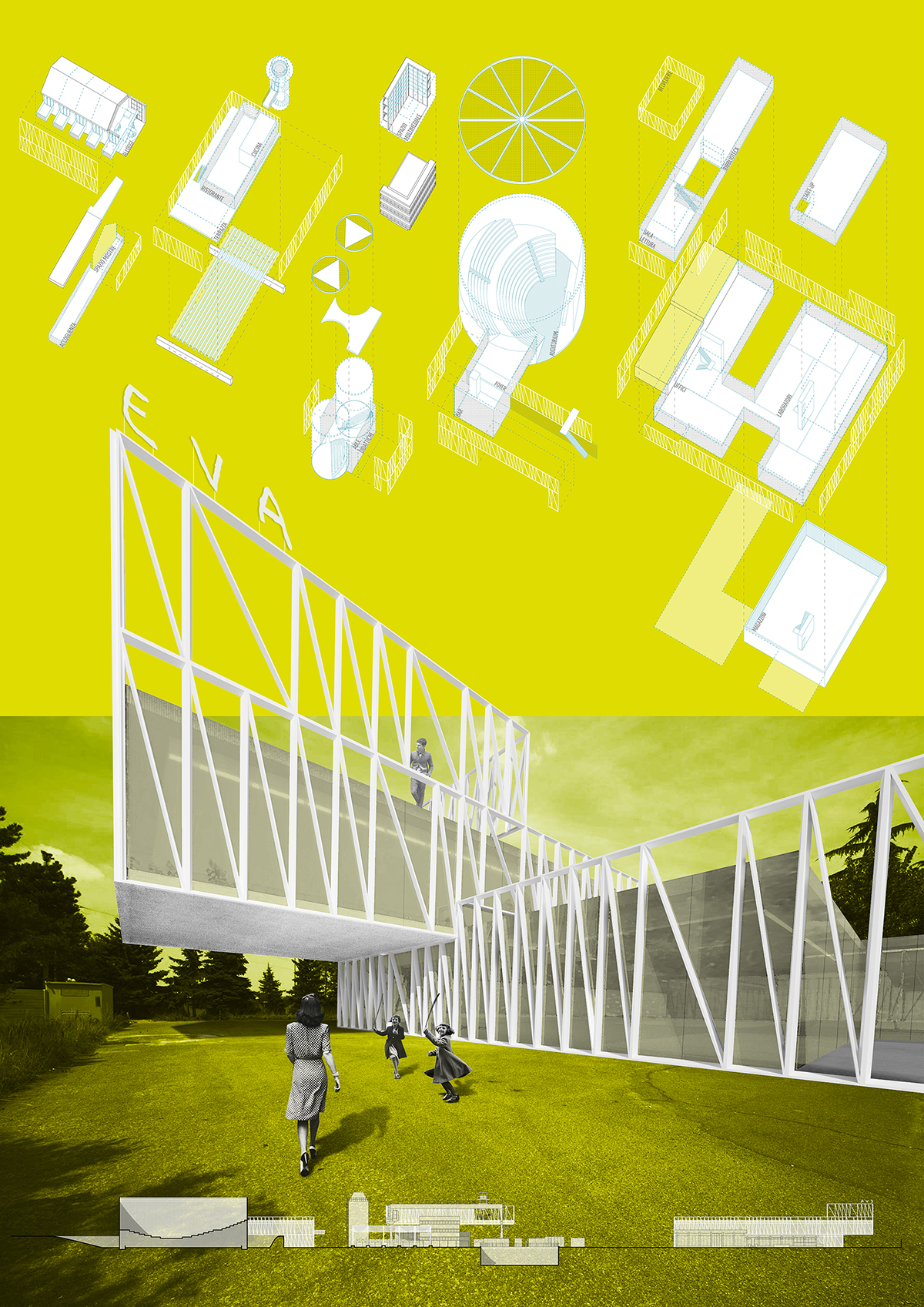
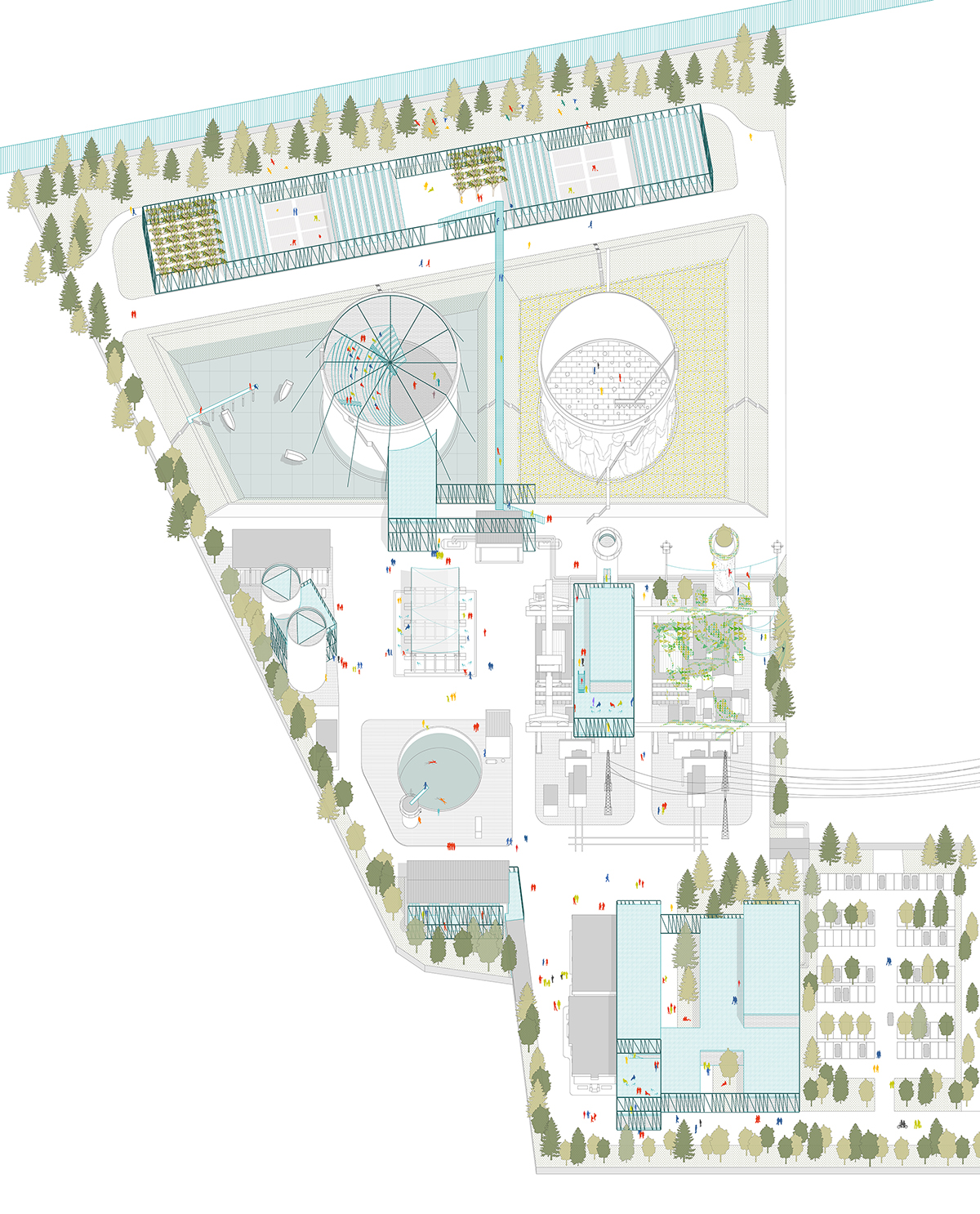


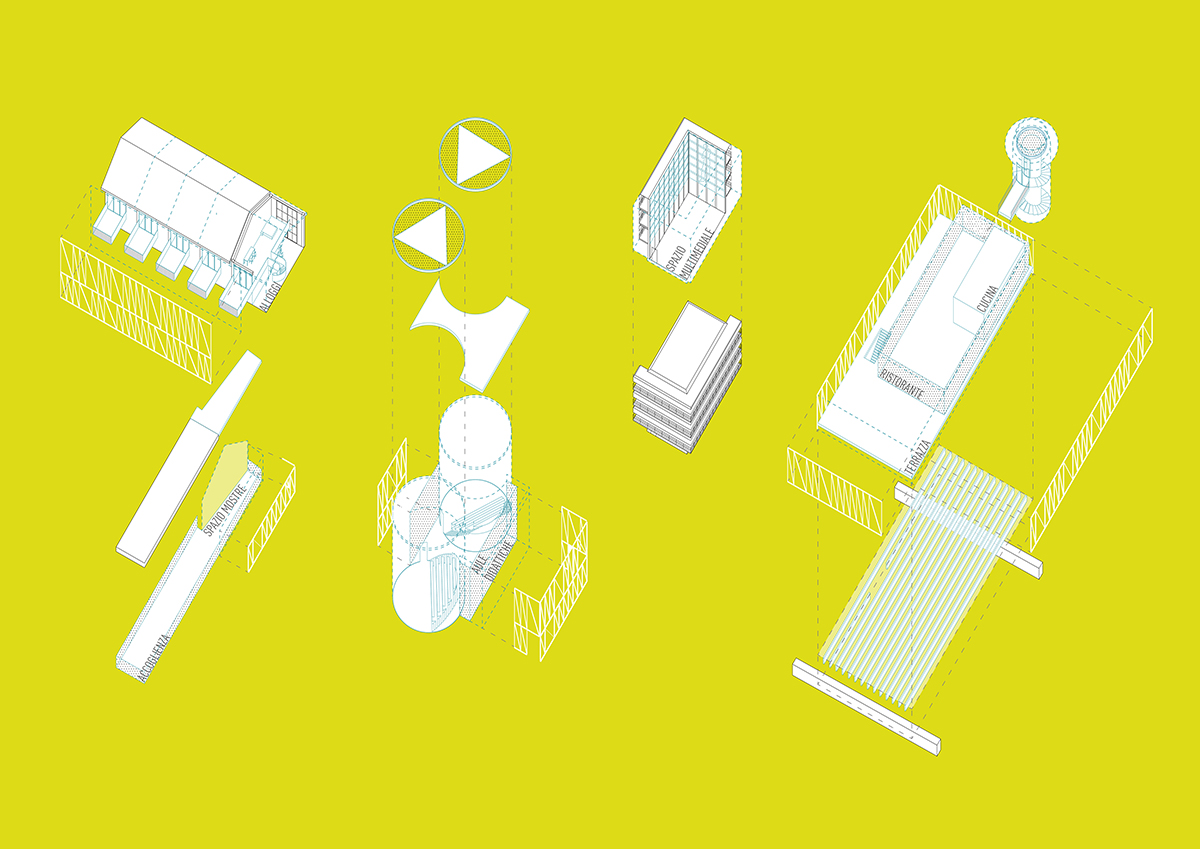
IT
E.V.A. - Energy Village Alessandria - è il progetto per la trasformazione di una ex-centrale elettrica Enel in un parco scientifico culturale, un polo di ricerca tecnologica e ambientale, caratterizzato da un mix funzionale capace di attrarre e coinvolgere diverse tipologie di utenti e potenziali investitori. E.V.A. è una soluzione specifica, ma anche un modello replicabile per analoghe aree dismesse. E’ un sistema che vuole riflettere il carattere originario del luogo come generatore di energia. E’ il riuso di vecchie strutture produttive al servizio di nuove necessità, in uno spazio dove attività umanistiche e ricerca tecnica possano svilupparsi insieme.
Il progetto individua un modulo costruttivo base in legno, la cui ripetizione genera tutti gli interventi architettonici: un edificio-landmark che all'ingresso dell'area ospita il fulcro delle nuove attività produttive e una serie di manufatti che, come parassiti, si ancorano alle strutture esistenti per rigenerarle installandovi nuove funzioni legate alla cultura, allo svago, alla didattica. Alcune strutture fra le più iconiche sono trattate come elementi di land art, con il contributo dell'artista italiano Valerio Berruti, anche autore del logo per il progetto.
